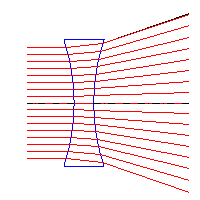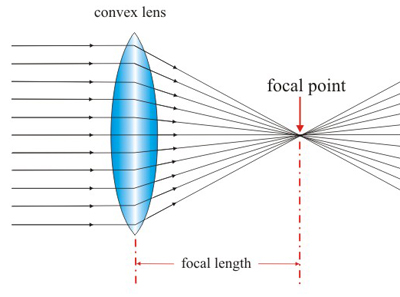The Basics
Glass has
been common to man for many thousands of
years. The earliest known discovery of glass dates back to
roughly 3,500 B.C.E when
the phonecians created glass by cooking on sand. Almost
5,000 years later the
convex, and then the concave lenses were invented. Concave
lenses have surfaces
that curve inwards while convex lenses have surfaces that
curve outward.

Concave
lenses are also referred to as diverging
lenses. When parallel light rays pass through a concave
lens they refract away
from the optical axis. The optical axis is a line along
which there is
rotational symmetry.
The optical axis in
Figure 2 is simply the straight center line.

Convex
lenses, also called convergent lenses, have
the opposite effect of concave lenses. When parallel light
rays enter convex
lenses they refract towards the optical axis point. The
point at which the
light rays all converge to is called the focal point. The
distance from the
focal point to the center of the lens is called the focal
length.
